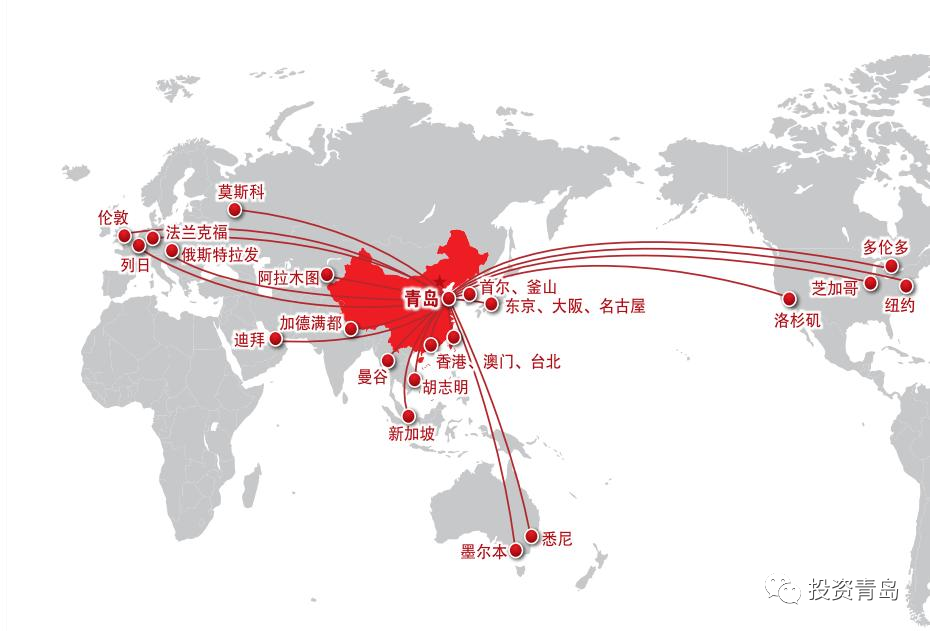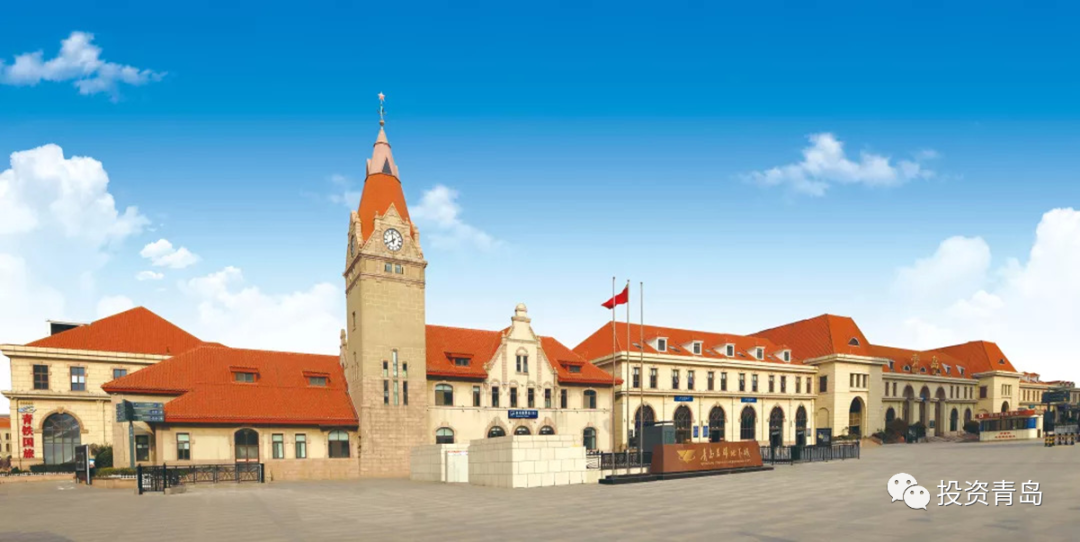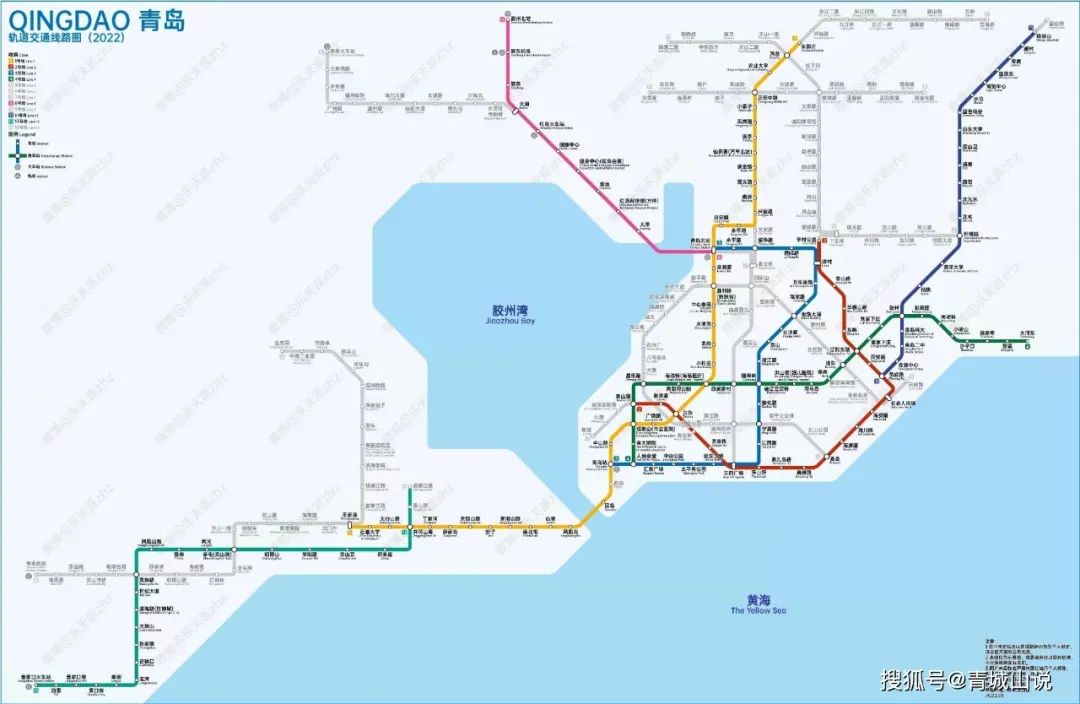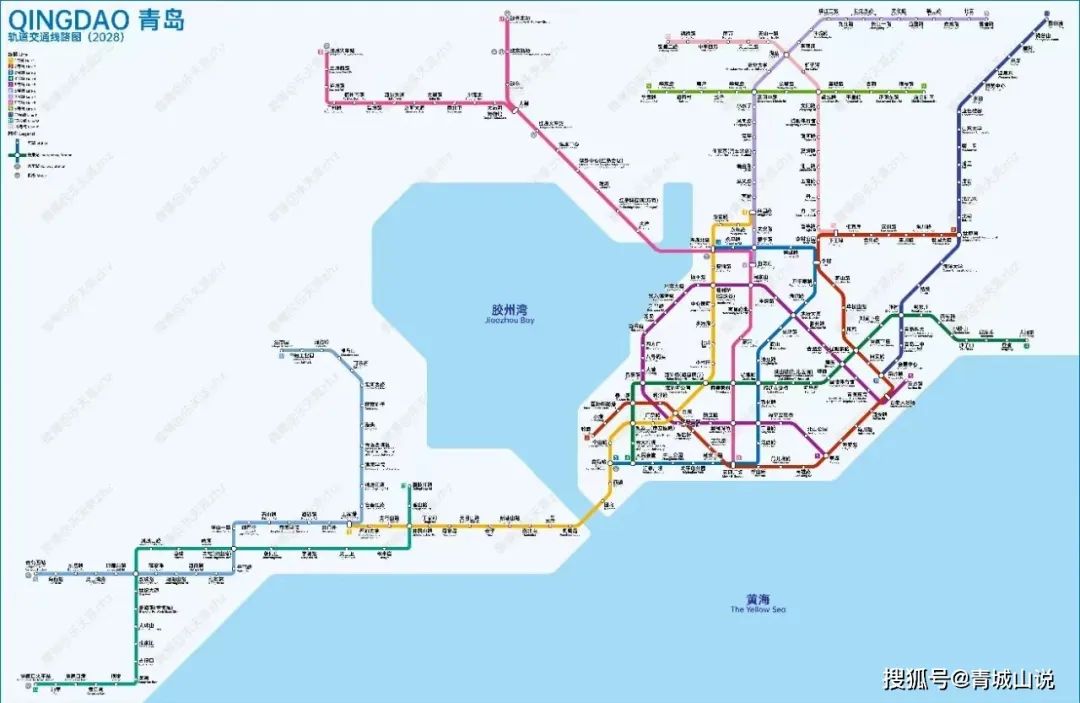Efficient Transportation Network
In the "National Comprehensive Three-dimensional Transportation Network Plan Outline" released in 2021, Qingdao was successfully included in the list of 20 cities designated as "International Comprehensive Transportation Hub Cities". This establishes Qingdao as a key node city on the main axis connecting the Beijing-Tianjin-Hebei region to the Yangtze River Delta, as well as on the Beijing-Harbin and Beijing-Xizang corridors. Additionally, Qingdao Port has been identified as one of China's 11 "International Hub Ports", signifying the national strategic recognition of Qingdao's role as a city with dual hub functions at an international level.
1. Port- World Class
Qingdao Port, established in 1892, is located at the center of the port clusters in the Bohai Sea region, the Yangtze River Delta, and near Japanese and Korean ports. It is a natural deep-water harbor that conducts trade with over 700 ports in more than 180 countries and regions worldwide.In 2023, Qingdao Port of Shandong Port Group achieved a significant milestone with its cargo throughput surpassing 700 million tons, and its container throughput exceeding 30 million TEUs (Twenty-foot Equivalent Units), ranking fourth and fifth globally in these respective categories. This achievement underscores Qingdao's significant role in global maritime trade.
Qingdao’s Container Terminal (Source: Shandong Port Group)
Qingdao is the second-largest port for foreign trade in China, boasting over 200 container shipping routes. The density of these routes ranks first among northern Chinese ports. Its sea-rail inter-modal transport routes cover the entire country and extend directly to Central Asia, Europe, Africa, and South America. From January to October 2023, Qingdao's sea-rail inter-modal transport handled 1.878 million TEUs (Twenty-foot Equivalent Units), maintaining its position as the leader in this field among all coastal ports in China for the ninth consecutive year.
2. Airport-Highest Level
Qingdao is a key civil aviation hub in China. In August 2021, the new Qingdao Jiaodong International Airport was put into operation,becoming the highest grade and largest airport in Shandong Province. Qingdao has thus become the fifth city in northern China to have a top-tier 4F-class airport. It operates flights to 132 domestic and international cities, with 203 routes. The international routes have resumed operations to more than 20 destinations, including Seoul, Pusan, Osaka, Tokyo, Singapore, Bangkok, Dubai, London, Moscow, Sydney, and Melbourne. By 2025, Qingdao Jiaodong International Airport is expected to connect to 130 domestic and 30 international cities, with passenger throughput exceeding 30 million and cargo and mail throughput surpassing 330,000 tons. This expansion will further cement Qingdao's status as a major international transportation hub.

Qingdao Jiaodong International Airport (Source: Qingdao Jiaodong International Airport)

Qingdao's International and Regional Air Routes for Passenger and Cargo Flights. (Some Accessible Cities)
3. Highways-Leading in Mileage
Qingdao boasts a total road mileage of 15,366 kilometers. In 2023, the mileage of operational expressways reached 892 kilometers,ranking first in Shandong Province and third among China's 15 sub-provincial cities.The major long-distance expressways passing through Qingdao include the G15 Shenhai Expressway (Shenyang to Haikou), G18 Rongwu Expressway (Rongcheng to Wuhai in Inner Mongolia), G20 Qingyin Expressway (Qingdao to Yinchuan), and G22 Qinglan Expressway (Qingdao to Lanzhou). The mileage of national and provincial highways is 2,231 kilometers, ranking second among sub-provincial cities. Qingdao has effectively built a comprehensive road network centered around expressways and national and provincial highways, supported by rural roads. This infrastructure ensures that all towns can access expressways within half an hour, forming a one-hour economic circle around the urban area. This extensive and efficient road network significantly enhances connectivity and accessibility, boosting Qingdao's appeal as a prime location for investment and development.
4. Railways-A Dense Network
Qingdao's railway transportation is well-developed, with a dense network of rail lines. As of 2023, there are 12 railway lines within Qingdao's territory, spanning a total operating mileage of 666 kilometers, including 228 kilometers of high-speed rail. The railway passenger transport hub in Qingdao comprises the main stations of Qingdao Station, Qingdao North Station, and Hongdao Station, along with the auxiliary Qingdao West Station, forming a "three main, one auxiliary" hub layout.
There are ten high-speed railway stations in Qingdao, ranking 4th in China. The city is served by various railway lines including the Jiaoji Passenger Dedicated Line, Jiqing High-Speed Railway (Jinan-Qingdao), Qingrong Intercity Railway (Qingdao-Rongcheng), Jiaoji Railway(Qingdao-Jinan), Qingyan Railway (Qingdao-Yancheng), Jiaoxin Railway (Jiaozhou-Xinyi), Haiqing Railway (Haitian-Qingdao), and Yanqing Railway (Yantai-Qingdao). These lines facilitate a daily operation of more than 200 pairs of passenger trains, connecting Qingdao with destinations across the country.

Qingdao Railway Station (Source: Qingdao Railway Station)
5. City Public Transportation-Convenient and Efficient
As of the end of December 2023, Qingdao has seven operational subway lines,spanning a total length of 318 kilometers, ranking it second among northern Chinese cities, just behind Beijing. Currently, there are 10 subway lines under construction.Upon their completion in 2028, the total operational mileage of Qingdao's subway system will exceed 500 kilometers.
Qingdao's ground public transportation network, characterized by its high density of bus routes and stations, is noted for its high level of management. According to the "2022 Q3 China Urban Traffic Report" published by Baidu Maps in collaboration with the Data Science Research Institute of Tsinghua University, among all 21 mega-cities and large cities in China, Qingdao has the lowest average public transit transfer coefficient, the shortest average walking distance for transfers, and the highest level of convenience. In terms of the average waiting time for buses and the overall happiness index for commuting, Qingdao ranks third among the 14 mega-cities.
As of November 2023, Qingdao has a total of 923 bus routes with an operational route length exceeding 20,000 kilometers. Within this extensive network, the five urban districts of the city feature 300 bus routes, covering a total operational length of 4,765 kilometers.

Qingdao’s Urban Rail Transit- Qingdao Metro Line Map as of the end of 2023 (Source: Qingchengshanshuo)

Qingdao’s Urban Rail Transit- Qingdao Metro Line Map as of the end of 2028 (Source: Qingchengshanshuo)


